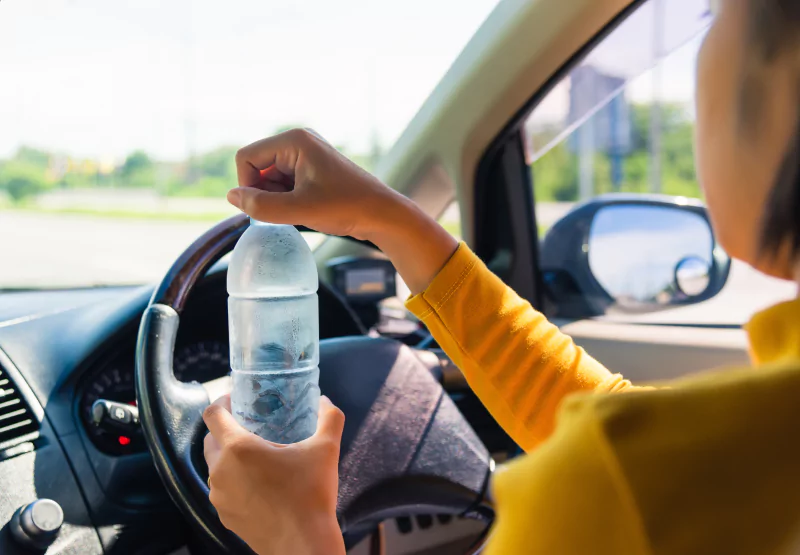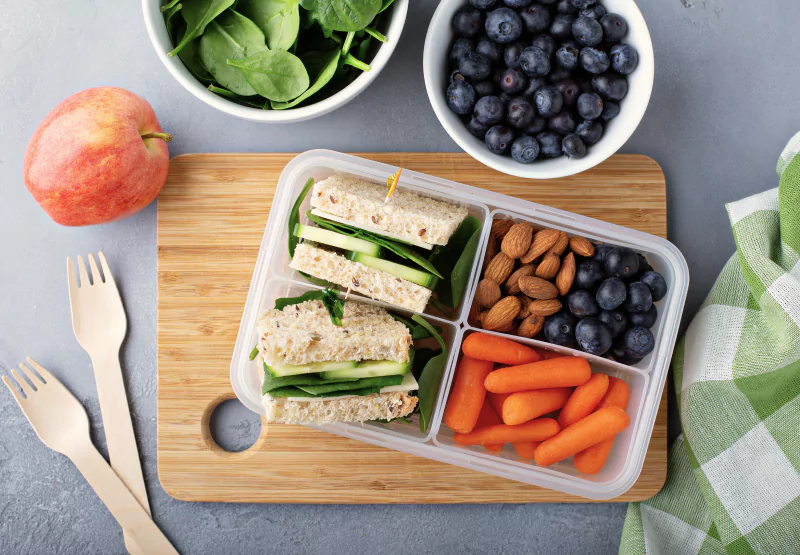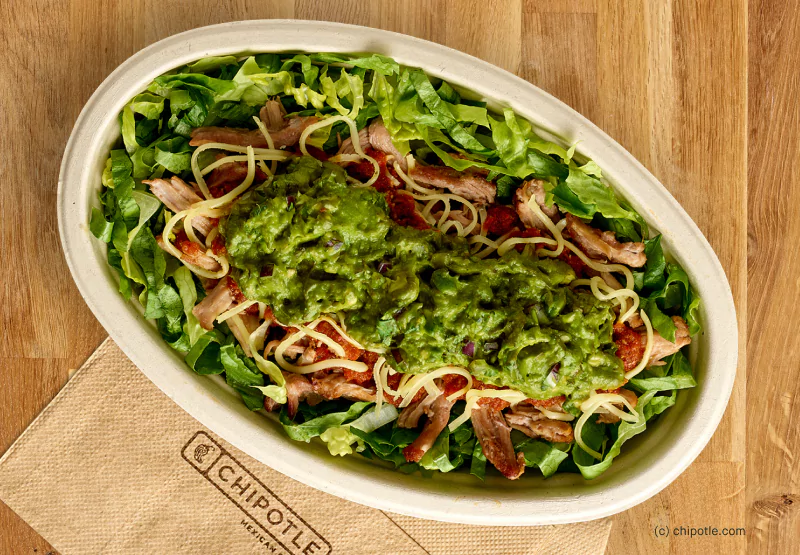Healthy Travel Snacks + Tips for Eating On-The-Go

Key Takeways
The holiday season is right around the corner, and along with it comes a lot of travel. Studies show that 42 percent of Americans plan to travel between Thanksgiving and mid-January.
Travel can be tricky because the food options at airports, gas stations, and convenience stores can be pretty limited and tend to be highly processed, high in sodium and added sugars, and low in nutrients.
In this article, we’ll give you tips on how to avoid some common travel food mistakes and make healthy eating choices while traveling.
Top Five Food Mistakes Made When Traveling

Travel can often be accompanied by a hectic schedule, last minute changes of plan, and stress that can leave us arriving at our destination feeling tired and depleted. Not supporting your body with good nutrition and food choices can only add to your exhaustion.
Here are some common food mistakes people make when traveling.
1) Going Too Long Without Eating
The hectic nature of travel can cause us to put off eating for too long. If you’re feeling hungry but plan to grab something on your next layover or wait until you get to the next town, you may want to rethink that.
Going too long without eating can cause your blood sugar to fall, which can lead to hypoglycemia. This is something anyone can experience, even if you don’t have a condition like diabetes.
2) Relying on Processed Convenience Snacks
Highly processed convenience snacks like potato crisps, candy, and frozen food can contain high levels of sodium, artificial ingredients, and added sugar. Studies also show associations between ultra-processed food intake and increased risk of several chronic conditions, especially obesity and cardiovascular disease, as well as mortality, cancer, and depressive symptoms.
Many of these snack options, though easy to pack into your carry-on bag, are also low in protein and other nutrients.
3) Not Drinking Enough Water

When you’re rushing around, it can be hard to remember to drink water. It can also be made more difficult by the fact that you can only bring small amounts of fluids through airport security.
Travel can also make you dehydrated, especially when spending time in the dry air of an aircraft cabin. This can be one of the causes of travel fatigue, along with anxiety about the journey and changes to your daily routine.
We’ll cover more about combatting travel-related dehydration later in this article. Signs you may not be drinking enough water include:
- Constipation
- Fatigue
- Headaches
- Moodiness
- Dry skin
4) Drinking More Caffeine
Sometimes you may need a little extra push from caffeine to make it through a stressful travel experience. But if caffeine is being used to “replace” the food you didn’t have time to eat or the water you didn’t have time to drink, you might want to consider whether or not you are nourishing yourself properly.
Ordering another coffee may seem like the only way to make it through your day of travel. But caffeine won’t supply the building blocks needed for our body to make energy, it only “pushes” the body to work harder with the available energy it already has.
If you are already not eating well during travel, caffeine may lead to more dramatic energy crashes later on. Some studies also show that caffeine may enhance your stress response and increase the levels of the stress hormone known as cortisol.
5) Drinking More Alcohol

A recent survey found that eight out of 10 airline passengers may consume alcohol when they fly. Researchers have long known that alcohol can lead to more dehydration. However, the quality of your diet also tends to worsen the more alcohol you drink.
One study looking at how alcohol consumption impacted food choice in college students found that food cravings increase, consumption of fruits and vegetables is lower, and consumption of junk foods is higher when paired with alcohol consumption than at other times.
Healthy Travel Checklist For Flying
When it comes to flying, you might underestimate what you can bring with you on the plane. Food is actually allowed on planes, so make sure to pack snacks and even some "mini meals.”
The foods you bring with you are likely going to be healthier (and definitely cheaper) than most things you'll find at the airport. Plus, if your flight is delayed or you're stuck in a section of the terminal with bad food choices, you won't have to worry because you'll already have everything you need.
Whether you’re packing food to bring with you or choosing from the available airport options, here are some tips and tricks for making your next flight a lot healthier.
1) Plan Snacks Ahead

Pack some TSA-friendly whole food-based protein-rich snacks. A little can go a long way! Here are some nutritious snack ideas that don’t require refrigeration:
- Uncured jerky
- Roasted chickpeas or edamame
- Assorted nuts to munch on (such as almonds, walnuts, cashews, pumpkin seeds, or sunflower seeds)
- Make your own healthy trail mix using a recipe like this from Bake it Keto
- If you’re interested in some carbs, pack some portable fresh fruits like apples and bananas, to accompany your favorite high-protein snacks
- Brown rice cakes and packets of nut butter (such as peanut butter or almond butter) to spread on top
- An Rx bar
- A low-sugar protein bar
- Safe Catch seafood pouches
2) Bring an Empty Water Bottle
Though you can’t bring a full bottle with you when you go through security, you can fill your water bottle up when you get through your checkpoint. Bringing a liter-sized water bottle will allow you to stock up on water before you even board your flight.
This tip can also help you keep tabs on how much you’re actually drinking through your day of travels. If you want a little extra “zing” in your water, try adding some sugar-free water flavorings from those brands like True Lemon or Ultima.
3) Make Healthier Choices at the Airport
If you didn’t bring enough snacks and are looking for food at the airport, here are some tips to keep in mind:
- Watch out for descriptive words like "fried", "battered", "creamed" and "breaded". Instead, choose foods that are "grilled", "baked", "roasted", "poached", or "steamed."
- Reach for protein first. Simple baked or grilled portions of meat, seafood, or tofu can be a good place to start. Wrapping your burger in a lettuce wrap instead of a processed flour bun might also be helpful.
- Try to get sauces or dressings on the side and use smaller amounts, especially if they contain added sugar.
4) Slow Down When You Eat

This can be easier said than done when you’re in a hurry during travel! But it’s important: studies show that eating too quickly can lead to insulin resistance.
Don’t forget that it’s perfectly fine to eat while you’re in the air. It’s easier and healthier to take smaller bites and chew more slowly while seated on your actual flight rather than trying to cram a meal down your throat while waiting at the gate or running to the terminal.
Pack some napkins and any utensils you need before boarding your plane. Then you’re all set to relax and enjoy the food you brought aboard!
5) Keep Alcohol and Caffeine to a Minimum
As we mentioned earlier, caffeine can increase stress levels and alcohol can lead to dehydration, both of which can lead to even more travel fatigue. You may want to opt for something like a brewed herbal tea or a low-sugar beverage to keep you hydrated during your trip.
Healthy Travel Checklist for Road Trips

Flying and driving share many common food-related stressors and challenges. However, when driving, sometimes we have a little bit more freedom in terms of what we can pack, which can make it a little easier to stock up on healthy road trip snacks.
Here are four things you may want to consider for your next road trip:
1) Expand Your Food Options
Similar to our first tip above, a little planning for food is important for smoother sailing. Not only can you pack the non-perishable items listed above, but if you happen to have a little bit of extra room on board for a cooler with some ice or ice packs, you can also consider things like these tips from the registered dietitians here at Nutrisense.
- Plain Greek yogurt or string cheese
- Pre-made hard-boiled eggs
- Uncured deli meat “roll ups” with sliced cucumber, sliced bell pepper, dijon mustard, and sliced avocado and a squeeze of lemon juice inside
- Chia pudding. You can make this quickly the night before by mixing approximately three tablespoons of chia seeds with about a ½ cup of unsweetened liquid, like almond milk. Top with some cinnamon or coconut flakes, or anything else that sounds good to you!
- Protein with sliced avocado. Season your avocado with some salt, pepper, lemon juice, everything bagel seasoning, or anything to your liking! Add in a pouch of tuna, leftover chicken, or hard-boiled eggs for a protein boost. It’s even better with some curry powder mixed in!
- Hummus or homemade bean dip with sliced cucumbers, baby carrots, or snap peas as dippers
- Pre-made wraps with gluten-free or low carb tortillas, fresh lettuces, chopped veggies of your choice, and some meat, seafood, or tofu for protein
2) Bring Extra Water
As we’ve already mentioned, it's a good idea to have your regular reusable water bottle in tow, and keeping an extra gallon or two of water to fill it up during a long trip not only saves you money, but also lessens excessive plastic waste from plastic water bottles.
3) Stick to a Regular Eating Schedule
During long trips, many people might find they either go extra long without eating or they “graze” on snacks for hours on the road. Instead, try setting alarms to stop and take breaks to eat during your normal meal times.
Use this as an opportunity to park, stretch, and refuel!
4) Healthier Fast Food

If you’re out of the options you brought and you’re grabbing something from a restaurant or fast food stop, there are some relatively healthier options you might want to try out. These might include:
- Subway No-Bread Bowls. These usually have a nice amount of protein and veggies with fewer processed carbs and sugar compared to a full Subway sandwich.
- Chick-fil-A Grilled Chicken Nuggets. These are grilled instead of fried, which can cut down on extra oil.
- Chipotle Salad Bowls or “Lifestyle Bowls”
Tips for After You Arrive at Your Destination
When thinking about low-hassle healthy food choices while traveling, it’s also a good idea to consider your trip’s destination. When you arrive, what food options will be available to you? Depending on where you are headed, this can vary!
It’s not a bad idea to take a peek at what food availability is like at your destination. Will there be grocery stores around that have what you need? Will you have access to a kitchen or kitchenette where you’re staying? How about a fridge and microwave? Having a game plan in place before you embark can help ease the stress once you arrive.
Find the right Nutrisense programto turn insight into progress.
Go Beyond Glucose Data with Nutrisense
Your glucose can significantly impact how your body feels and functions. That’s why stable levels are an important factor in supporting overall wellbeing. But viewing glucose isn't enough. Nutrisense, you’ll be able to learn how to use your body's data to make informed lifestyle choices that support healthy living.
One-to-one coaching
Sign up to access insurance-covered video calls to work with a glucose expert: a personal registered dietitian or certified nutritionist who will help tailor your lifestyle and diet to your goals.
Monitor and measure what matters
With the Nutrisense CGM Program, you can monitor your glucose with health tech like glucose biosensors and continuous glucose monitor (CGM)s, and analyze the trends over time with the Nutrisense App. This will help you make the most informed choices about the foods you consume and their impact on your health.
Find your best fit
Ready to take the first step? Start with our quiz to find the right Nutrisense program to help you take control.

Heather is a Registered and Licensed Dietitian Nutritionist (RDN, LDN), subject matter expert, and technical writer, with a master's degree in nutrition science from Bastyr University. She has a specialty in neuroendocrinology and has been working in the field of nutrition—including nutrition research, education, medical writing, and clinical integrative and functional nutrition—for over 15 years.




